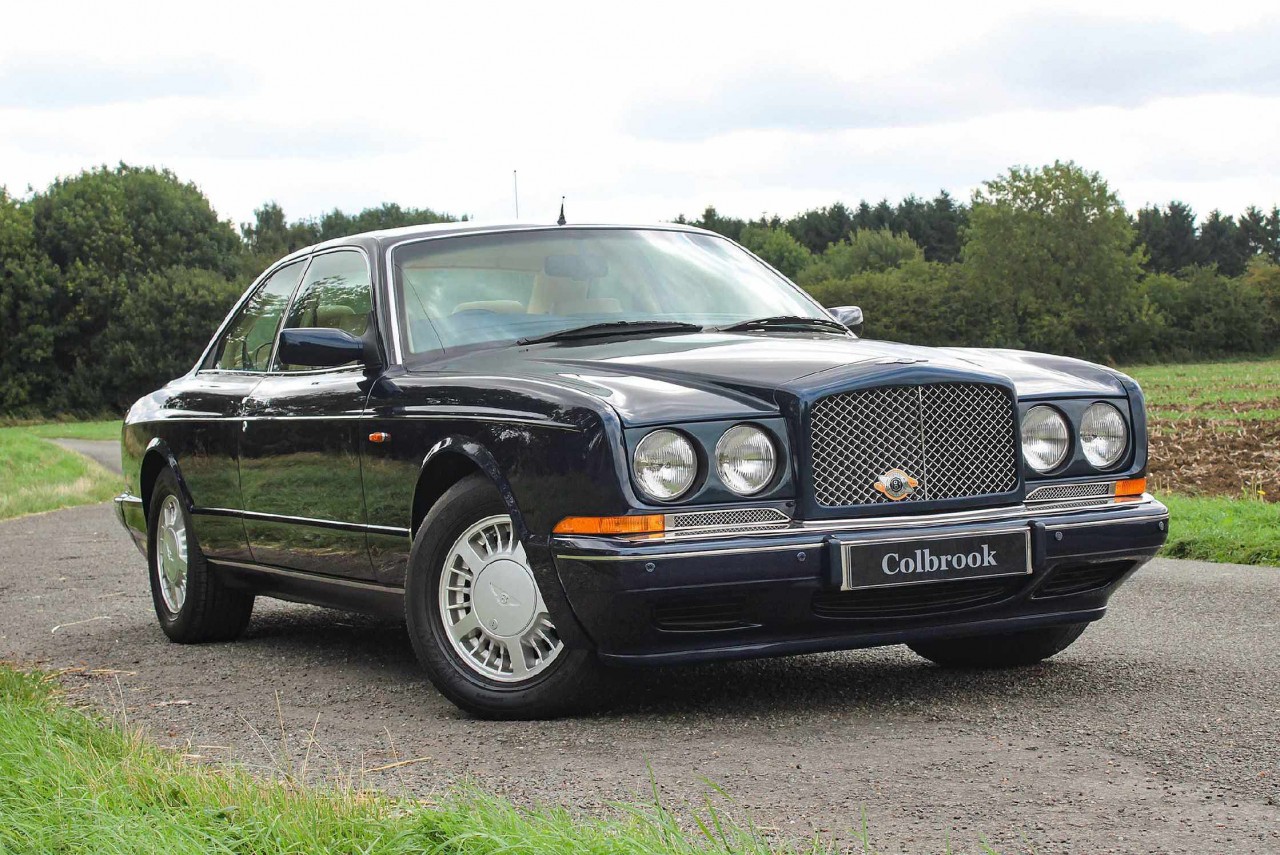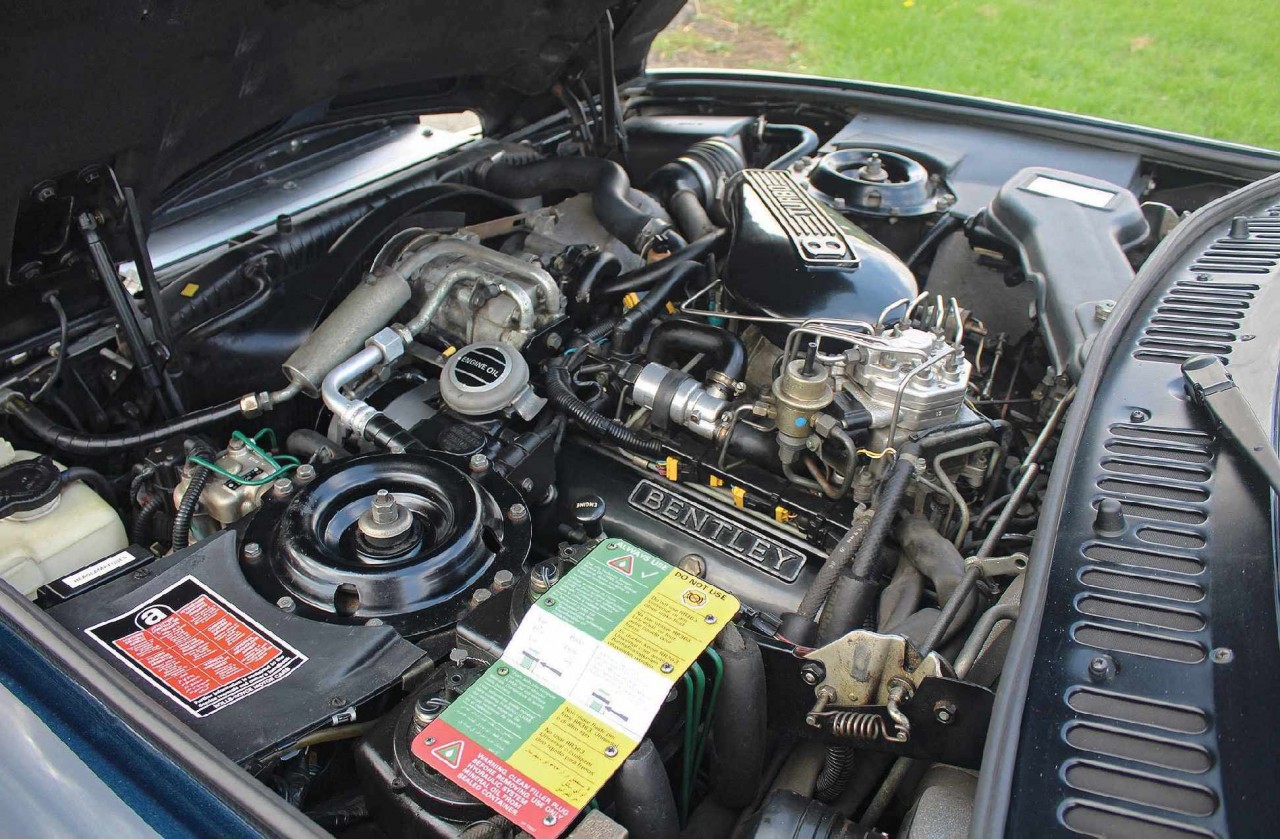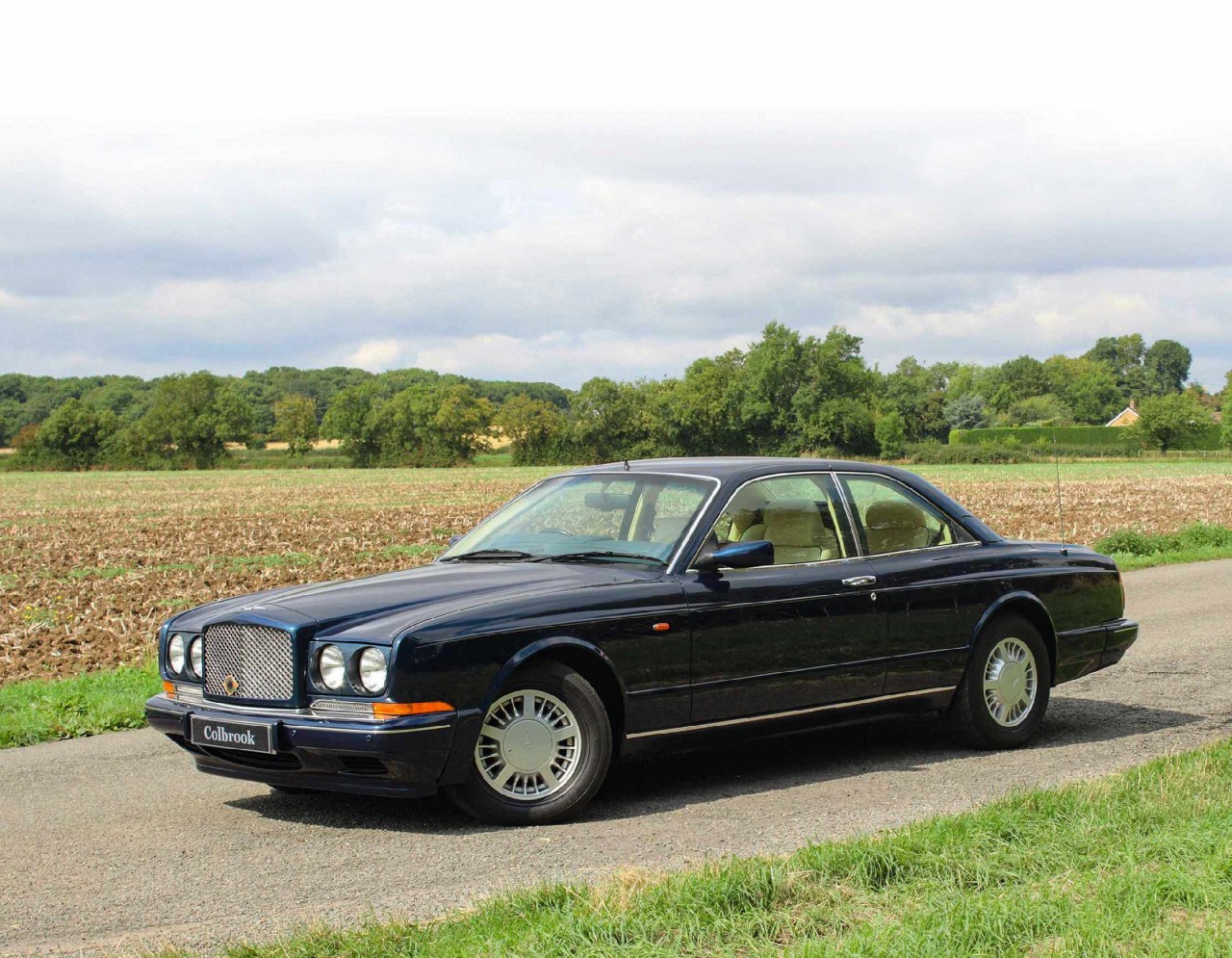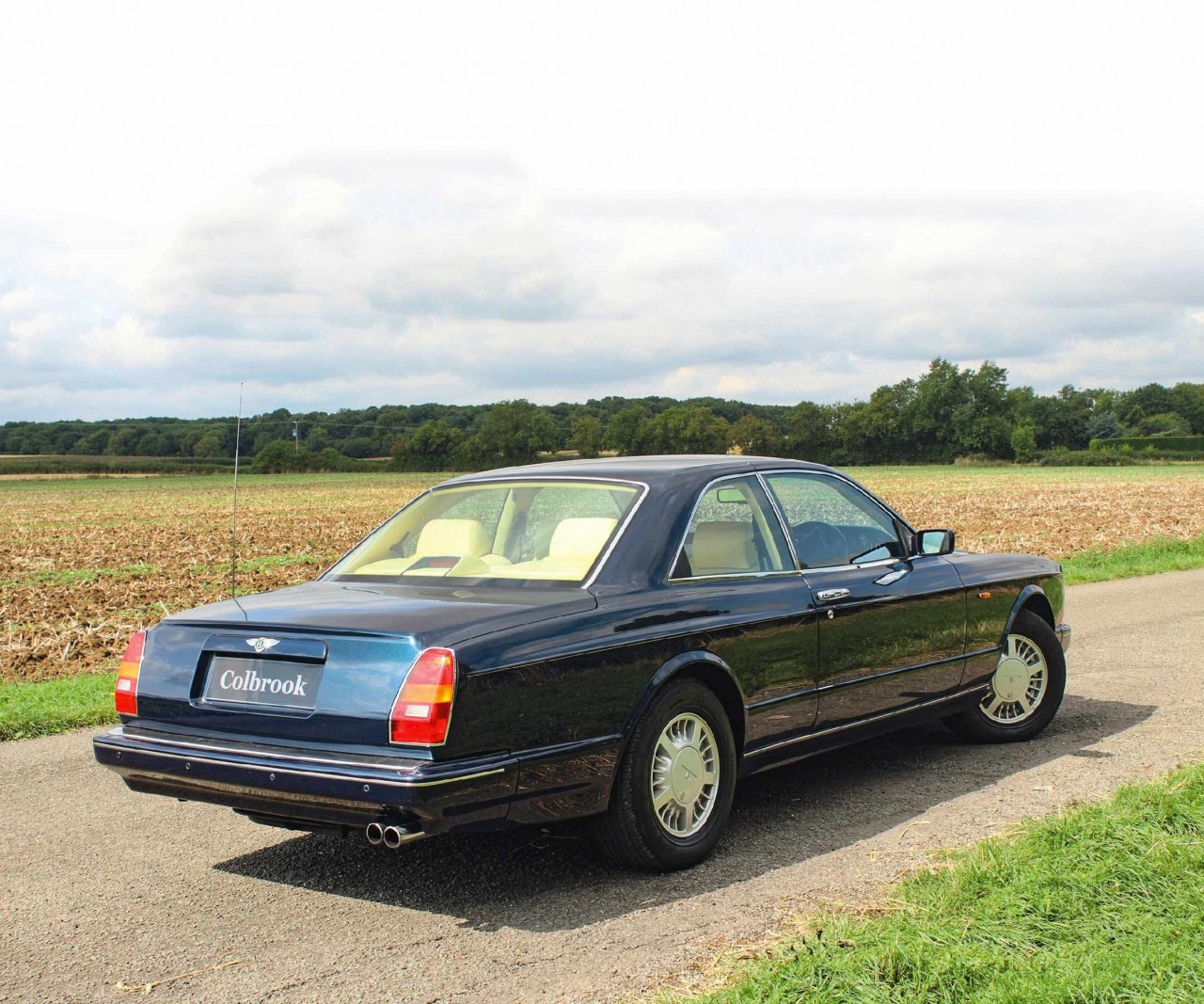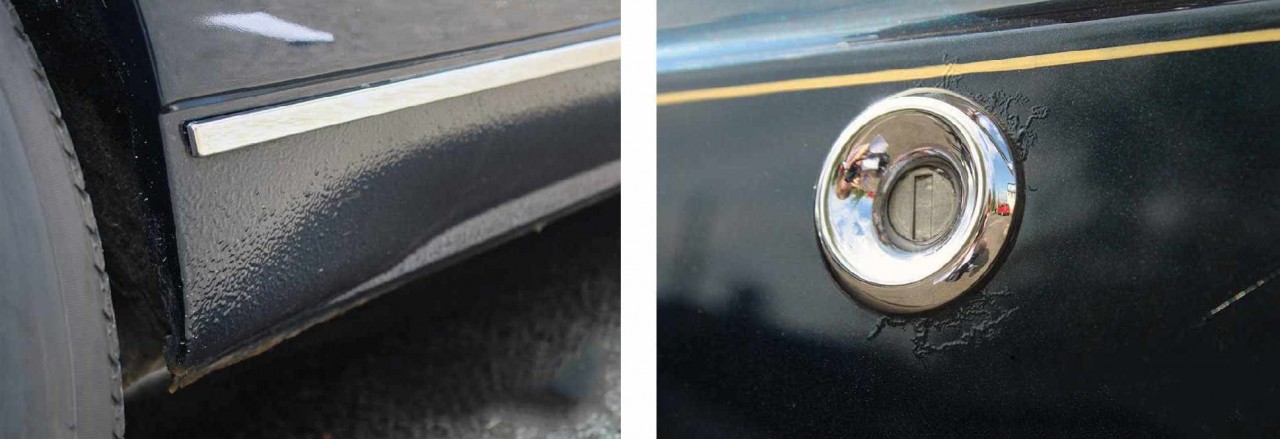BUYING A CONTINENTAL R All the help and advice you need if you’re thinking of investing in this handsome classic of the ’90s.
With the launch of the Continental R in 1991, the decade-long revival of the Bentley marque was complete. This was the first Bentley since the ’60s to not share its body with a Rolls-Royce; indeed, it didn’t even share its body with another Bentley, such was its bespoke approach. Every aspect of the new two-door’s styling was unique, from its lower roofline with cut-in door frames to its re-sculpted front wings and distinctive rear haunches. The overall look of the Continental R had been created by the functionally named International Automotive Design consultancy of Worthing – and the end result was superb.
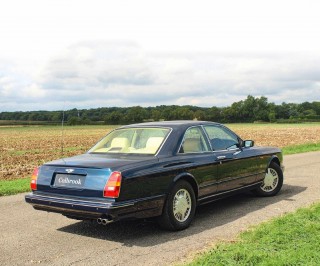
“The majority of issues with a Continental will relate to body corrosion, especially on early examples”
At £175,000, however, this newcomer was one of the world’s most expensive cars, although at least it was also one of the fastest. At launch, this latest Continental used the familiar 6.75-litre V8 with a big Garrett turbocharger and an intercooler in the same state of tune as in the Bentley Turbo R. Crewe still declined to provide official power outputs at that time, although it’s estimated that around 325bhp was on tap, along with a huge amount of torque. Top speed was governed to 145mph, with 0-60mph achieved in just 6.6 seconds – all in a car weighing around 2.5 tons, on a 120-inch wheelbase and with an overall length of 17.5 feet.
The rest of the Continental R’s running gear was also taken from the Turbo R, with fully independent coil-spring suspension (featuring hydropneumatic self-levelling at the rear) and power-hydraulic brakes with ABS, plus variable-assistance power steering. To add to the sporting feel of the newcomer, this was the first Crewe-built automatic-transmission car to have the gear selector in the centre console rather than on the steering column. The selector handle incorporated a Sports button, which would simultaneously quicken the gearbox’s reactions and delay upshifts while firming up the suspension.
Aside from that, the interior was largely the same as in the Turbo R. The major change was to the centre console, which not only incorporated the gear selector but extended back to between the rear seats to form an arm rest, drinks holder and storage cubby; it also swept up to the dashboard top, forming space for six ancillary instruments. All Continental Rs were finished and trimmed by Rolls-Royce’s Mulliner Park Ward subsidiary and carried MPW builder’s plates, with the bodies being assembled by hand from machine-pressed panels.
CONTINENTAL SHIFT
The first updates to the Continental R were made in 1994, when the engine’s cylinder heads were redesigned by Cosworth to improve both torque and top-end power (to 360bhp), while the wheels were increased in size to 17-inch diameter. At the same time, a limited-edition model with even more power – the Continental S – was offered to existing Bentley customers, with these 37 cars providing an estimated 385bhp and shaving half a second off the 0-60mph time.
The Continental’s engine received a new electronic management system and digital boost control in 1996, improving both throttle response and fuel consumption, while the air-to-air intercooler was switched for a more efficient air-to-water unit. For the first time ever, Crewe also published official power figures – with the latest Continental R now producing 385bhp as well as the highest torque of any production car (550lb.ft. at 2000rpm). Top speed was increased to an artificially limited 155mph and the 0-60mph time fell below six seconds, giving the Bentley true supercar-rivalling performance. Electronic traction control was also introduced to help keep everything under control.
The ultimate version, however, arrived in late 1996 in the form of the Continental T, featuring a wheelbase four inches shorter than that of the R as well as noticeably extended wheelarches. Under the bonnet was a tuned engine delivering 400bhp, which was raised to 420bhp (and 650lb.ft. of torque) in 1998. The Continental T was 90kg lighter than the standard Continental R, and was noticeably more responsive to drive, while its interior featured engine-turned aluminium dash panels instead of wood, as well as a push-button starter.
The last major changes to the Continental range came in 1999, when Mulliner versions of the Continental R and Continental T were offered. In the case of the R, this meant gaining the same 420bhp engine as the standard T, while the T Mulliner benefited from uprated dampers and significantly stiffer anti-roll bars to further improve its sporting credentials. Bentley (by then owned by Volkswagen) also introduced a high degree of personalisation for the Continental, offering buyers a wider variety of power outputs and a plethora of interior and exterior options.
The Continental R and T models – in both standard and Mulliner forms – remained in production until 2003, by which time a total of 1854 of all types had been built, 1236 of which were standard Continental Rs and 322 were standard Continental Ts. This critically acclaimed range was a major commercial success for such an upmarket offering, not only in terms of sales and revenue but also for the boost it gave to Bentley’s reputation.
Thanks to the Continental, the brand was once again seen as one of the most desirable and prestigious in the world, on a par – and perhaps even exceeding – its Rolls-Royce counterpart when it came to exclusivity. These days, however, the Continentals of the ’90s are rather more affordable – and are a seriously tempting proposition. So what do you need to know if you’re tempted to take the plunge?
BODYWORK CHECKS
The majority of issues with a Continental will relate to body corrosion, especially on early examples that are now approaching their 30th birthdays. Fortunately these problems are confined to a few well-known areas, and serious structural rot is extremely rare. The thing to bear in mind is that even relatively simple repairs, such as replacing crusty wheelarches, cost far more than on a regular car of the same age if the job is done to the proper standards, especially with regard to the paint and trim. Such jobs can quickly eat into the value of these cars.
Those wheelarches are the first areas to check, both outside and inside the wing; the lower portions of the front wings, especially between the A-pillar and the wheelarch, is another.
Swing the front wheels from lock to lock to get a good look behind the front bumper on each side, looking for accumulated mud, rusty front sections or repairs (the latter must be of a good quality). The panel line between the front bumper and the wing is, by design, an odd, uneven shape – and so, despite appearances, this is not a sign of accident damage or a bodge.
Continental Ts and Mulliner-spec cars have fitted side skirts over the sills which trap dirt and moisture, often causing the metal sills to rot away unseen behind the cosmetic body kit. Run a hand under and behind the skirt to feel for scabby or soft metal. If the skirt itself is rusty, you can assume there is very little left of the actual sill. On other models, especially earlier Continental Rs, the sill tends to rust only at the rear where it flares out ahead of the rear wheelarch, and so you need to check here in the same way.
The doors, bonnet and boot lid are aluminium alloy, and any area where the paint is broken – such as door handles, locks, badges and trim – can be the starting point for electrolytic corrosion. It will be a rare Continental indeed that is entirely free of such corrosion, but it takes a long time to become visible without close inspection. Repairing and painting aluminium costs even more than the steel parts, so it really isn’t worth taking on a car with more advanced electrolysis issues.
TRIM AND INTERIOR
Much of the value (and potential expense) of a Bentley – and especially a Continental – is in the interior. It’s all made of high-quality materials that rarely wear, but replacing or refurbishing any of the trim or soft furnishings will be a seriously expensive job. Many cars had customised parts, which means that even a specialist breaker may not yield what you need. Fortunately, however, the vast majority of Continentals have excellent interiors.
If the car had a phone installed from the factory, Crewe usually fitted a rather nasty and cheap-looking aerial on the leading edge of the roof. The phone won’t work anyway these days, so the aerial is best removed and the hole properly sealed.
The seats on the Continental are unique due to the fact that the backs fold forward to allow access to the rear; check that the latches work properly (they should release at the touch of the button on the side of the bolster and automatically re-engage). There are two ECUs per seat, with the extra one controlling how the seat will move all the way forward when the back is released to allow easier access, then return to its original position when the back is re-latched; make sure this works, as well as all the usual adjustments and memory functions.
RUNNING GEAR
The rubber bush at the top of the front spring strut needs checking. You need to open the bonnet and use a couple of fingers to test the clearance between the inner and outer parts of the strut mount. It should be even all-round; if it’s not, then the bush needs replacing at a cost of around £500 per side.
The upper and lower ball joints are prone to wear on these weighty cars, so listen for knocks and bangs from the front wheels during your test drive – and budget around £250 per side if they need changing. The test drive will also reveal whether the hydropneumatic spheres for the rear suspension are in need of replacement (shown by a stiff and jolty ride), with the cost of this work being around £600 via a specialist.
If the car is tail-down, then the self-levelling system has failed altogether, which is a big expense to put right. It is now easier to find 17-inch tyres of the correct rating for the Continental R than 16-inch ones, which means that many early Rs are running on later wheels; whatever the size, look for kerbing damage and general wear to the wheels.
The Continental’s drivetrain is familiar and robust, with engine problems being fairly rare as long as it has been serviced properly. It should, of course, be whisper-quiet at idle, with noisy valvegear suggesting that the hydraulic tappets are worn (or gummed up from infrequent oil changes); they can be replaced, but it’s a near- £2000 bill from a specialist. Any blue smoke under acceleration or lacklustre performance, meanwhile, points to a worn or damaged turbocharger, which you can confirm by looking around the turbo and in the intake tract for oil leaks. The gearbox is all-but indestructible and there are a lot of parts and specialists around to tend to any minor problems that may come up.
EXPERT ADVICE
Our source of information for this feature was Colin Ayres of Colbrook Specialists in Stilton, Cambridgeshire (tel. 01733 243737, www.colbrookspecialists.co.uk), who also provided the 1993 Continental R featured in the photographs. Beyond his advice that we’ve already included in this feature, Colin’s offered this conclusion: “As ever with cars of these sort, the service history is key. Mileage is really inconsequential as long as the servicing has been kept up. But you need to be sure that it’s a meaningful history, which means dealer or specialist stamps in the book rather than a general garage. We often see adverts claiming ‘full’ or ‘extensive’ service history, which amounts to a couple of stamps with years between them – so do make sure that you carefully check the paperwork yourself.”
Meanwhile, Colin is full of praise for the value offered by these Continental models of the 1990s: “These cars are hugely under-priced at the moment. If it was a Ferrari with 350bhp and coachbuilt bodywork, it would be worth ten times as much – although I think they’re about to go from being modern classics to truly collectable cars. These are the last of the true all-Crewe Bentleys, as well as some of the last luxury cars you can genuinely call coachbuilt. That counts for a lot.”
WHICH MODEL TO BUY?
Each of the Continentals offers a mix of performance, luxury and style that has won people over since the model’s launch. The only question is how much you are willing to pay for exactly what levels of those three qualities. A standard Continental R has the advantage of offering the lowest prices in the range, with between £30,000 and £40,000 securing you a fine example. It might be the most ubiquitous member of the family, but it’s still an exclusive machine. The car featured in the photographs is a 48,000-mile Continental R from 1993, finished in Royal Blue and available from Colbrook Specialists at an asking price of £38,500.
You’ll need up to three times as much to secure a good example of a Continental T, although that really is the ultimate in modern-classic Bentleys with a brawny ‘iron fist in a velvet glove’ character that can’t be beaten. A worthy dream car, but is it really three times the car that the R is? Probably not, which is what makes a straightforward, well-looked after Continental R from the mid-1990s our pick of the bunch. Not only does it offer a superb ownership experience, it’s also a sensible choice in terms of long-term investment potential.
TECH DATA CONTINENTAL R (1991-1994) / CONTINENTAL T
Engine 6752cc V8 turbo /6752cc V8 turbo
Power 325bhp @ 4000rpm / 420bhp @ 4000rpm
Torque 450lb.ft. @ 2000rpm / 645lb.ft. @ 2100rpm
Transmission GM 4L80-E 4-spd auto / GM 4L80-E 4-spd auto
Top Speed 145mph / 168mph
0-60mph 6.6 secs / 5.8 secs
Suspension Independent coil springs, self-levelling, adaptive damping / Independent coil springs, self-levelling, adaptive damping
Brakes Ventilated power-hydraulic discs all-round / Ventilated power-hydraulic discs all-round
Weight 2402kg / 2423kg
“The last major changes came in 1999, when Mulliner versions of the Continental R and Continental T were offered”
It’s important to check that the Continental you’re buying comes with a comprehensive history. The seats, headlining and trim are obviously unique to the Continental R. Checking the condition of the interior is vital, as refurbishment doesn’t come cheap. It’s important to check the clearance between the inner and outer parts of the strut mount. The cheap-looking phone aerial can let down an otherwise excellent car and is best removed. The Continental family’s flared rear part of the sill needs checking carefully for rot. The aluminium doors, bonnet and boot lid can show signs of electrolytic corrosion.

